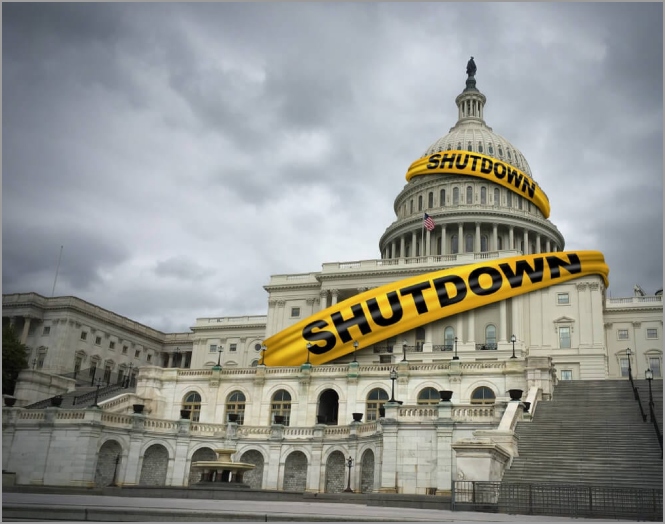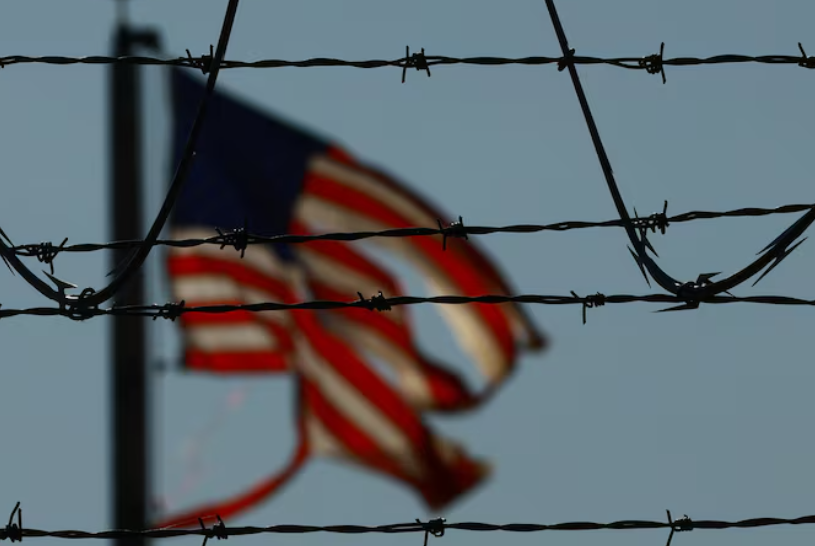For the first time in six years, the U.S. government has officially shut down. At 12:01 a.m. EST on October 1, 2025, funding lapsed after Congress failed to pass a budget, triggering what is legally known as a “lapse in appropriations.”
This means the government no longer has the authority to spend money, leading to immediate disruptions across federal agencies.
The last shutdown occurred in 2018 during President Donald Trump’s first term and lasted 34 days into early 2019, making it the longest in U.S. history. While the length of this current shutdown, again under Trump, remains uncertain, both parties in Congress appear deeply divided, leaving no clear resolution in sight.
Impact on Federal Workforce

The shutdown places around 750,000 federal employees on furlough — effectively temporary, unpaid leave. These workers have been instructed not to report for duty because funds are unavailable. Other essential personnel — including TSA agents, air traffic controllers, federal law enforcement officers, and military service members — must continue working, though without pay until the government reopens.
By law, all furloughed and unpaid federal workers are entitled to back pay, an expense the Congressional Budget Office estimates will cost $400 million once appropriations resume.
Members of Congress and the President, however, continue to draw their salaries during the shutdown, a recurring point of public frustration during these crises.
Immigration Agencies: A Mixed Picture
While much of the federal government grinds to a halt, immigration law and enforcement operations remain active, though not without delays and disruptions.
- U.S. Citizenship and Immigration Services (USCIS): USCIS remains open because its operations are largely funded by filing fees, not congressional appropriations. Families and individuals can continue to submit applications for green cards, naturalization, and other benefits, though processing times may slow due to broader system strain.
- Immigration and Customs Enforcement (ICE): Enforcement activities continue as normal. ICE has reiterated publicly that the shutdown does not suspend immigration law enforcement and reminded the public that rumors suggesting otherwise are false.
- Customs and Border Protection (CBP): Ports of entry remain open, and agents continue to enforce U.S. laws. However, immigration applications filed at the border — such as asylum requests — may experience processing delays.
- Executive Office for Immigration Review (EOIR): Immigration courts are scaling back operations. Only detained cases will move forward, while all non-detained hearings are postponed and rescheduled after the shutdown. This will likely worsen the already significant backlog of immigration cases, which now number in the millions nationwide.
- Department of State (DOS): Visa and passport services continue, but should the shutdown extend, DOS warns it may be forced to limit operations to diplomatic cases and life-or-death emergencies only.
- Department of Labor (DOL): The DOL’s Office of Foreign Labor Certification, which oversees labor condition applications and other employment-based immigration processes, halts operations entirely. This freeze affects employers seeking to sponsor workers under programs like H-1B visas.
Legal and Policy Implications
For immigration practitioners, this shutdown underscores the uneven funding structures across agencies. Fee-funded services such as USCIS are shielded from immediate closure, while court functions and labor certifications stall. This creates legal uncertainty for families, employers, and advocates, who must now anticipate prolonged delays and heightened stress.
The suspension of non-detained immigration court hearings may have the most significant long-term consequences. Each postponed hearing adds to the massive backlog, raising concerns about due process for immigrants waiting years to have their cases heard. Employers depending on the DOL’s certification process may also face workforce disruptions.
Meanwhile, advocates warn that the continuation of enforcement activities by ICE and CBP — without parallel access to full adjudication of benefits or hearings — further skews the immigration system toward punitive measures rather than balanced adjudication.
Looking Ahead
If the shutdown proves prolonged, immigration lawyers, policy analysts, and impacted families will need to brace for systemic slowdowns and disruptions.
Although enforcement will not stop, the combination of stalled court hearings, halted labor certifications, and potential visa and passport restrictions could create ripple effects far beyond the duration of the funding lapse.
As lawmakers remain locked in partisan battles, the lived reality is that immigrants, their families, and the legal community face heightened uncertainty — and a reminder that immigration law remains deeply entangled with the broader struggles of governance.

